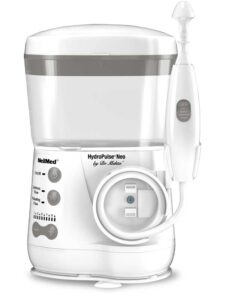Cystic Fibrosis and Sinusitis
Medicine has advanced the treatment of Cystic Fibrosis and sinusitis (CF) significantly in the past 10 years. Various measures that clear the lungs are becoming standardized.
The Cystic Fibrosis Foundation as well as other support groups have been contributing not only to uncovering a cure but in helping the patient and their families as well.
In 1989 the gene etiology of this condition was recognized and gene therapy is now being actively pursued. The CF patient fails to have normal mucus clearance. Thick tenacious mucus keeps bacteria from being cleared and prevents antibiotics from being effective. Clearance of mucus from the chest therefore is a paramount treatment objective. Various physical therapy methods include chest percussion, forceful exhalation, various dilators, postural drainage. The flutter device uses sound vibration to help reduce the thickness of the mucus. Inhalation of drugs that break down the structure of the mucus are in use.
A similar thick fluid causes sinus infections. Nasal polyps are common. This is a type of bag of water where the liquid is maintained within the cell so that the cell expands and blocks the nose. A mucocele can develop, often in the frontal sinus. This is a similar bag of water within a membrane that expands and puts pressure on the sinus wall. Headaches in the frontal sinus area – above the eyes – is a common sign.
Pulsatile irrigation is useful in several ways. First it can remove thick secretions from the nose and sinus. This is important because removal of thick secretions helps to restore regular methods of body resistance. Pulsatile irrigation helps remove bacteria. Any reduction of the bacterial load helps the body resist infection.
In the journal Laryngoscope, Dr Davidson’s article entitled Management of Chronic Sinusitis in Cystic Fibrosis he recommends pulstile irrigation for CF especially prior to lung surgery.

